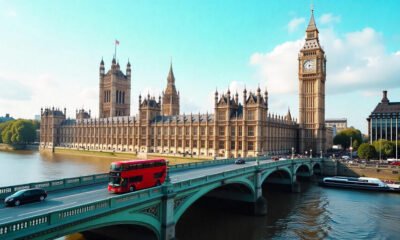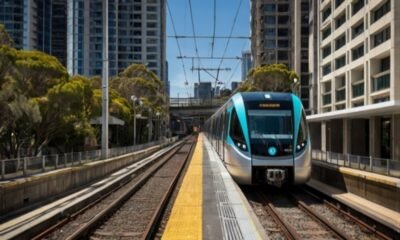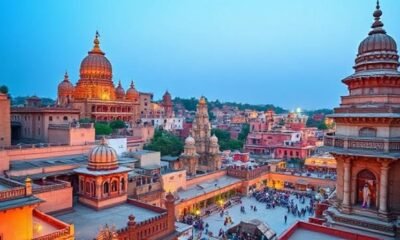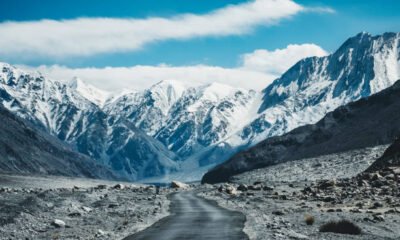Travel Guides & Articles
Urgent IMD Alert For India’s Bengaluru: Torrential Downpours Wreak Havoc With Citywide Waterlogging, Massive Traffic Jams, And Flight Chaos
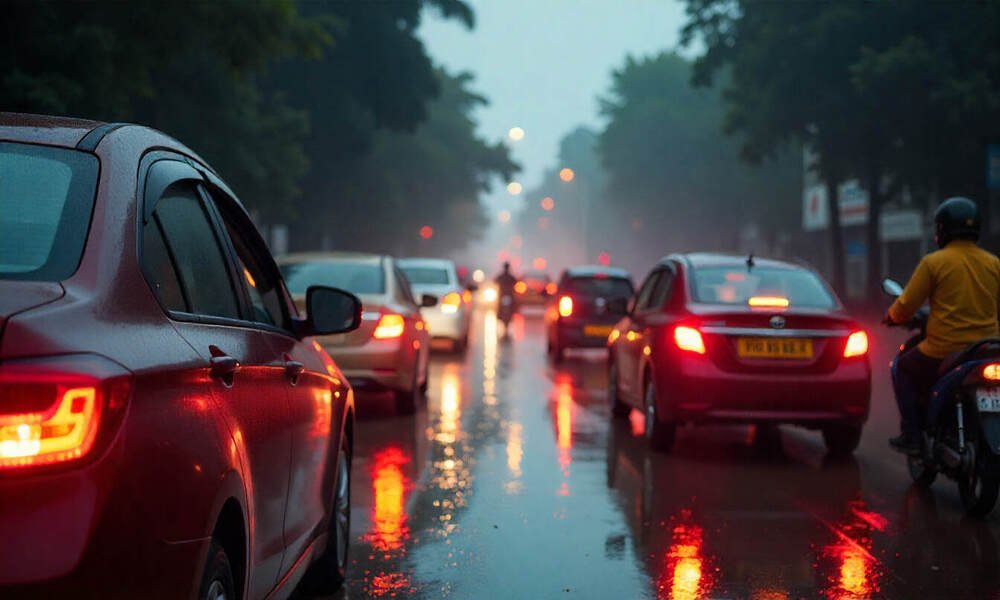
Published on
August 7, 2025 |
By: TTW News Desk
Bengaluru is currently facing severe disruptions due to relentless monsoon rains, which have caused widespread waterlogging and significant traffic congestion across the city. The India Meteorological Department’s forecast of continued heavy showers and thundershowers this week means that these challenges are expected to persist, affecting daily commutes and straining urban infrastructure. As roads become flooded and movement slows to a crawl, the city is also experiencing disruptions in air travel, with flights being delayed or diverted due to adverse weather conditions. This situation highlights the ongoing struggle Bengaluru faces in managing the impacts of intense monsoon rains amid growing urbanization and inadequate drainage systems, making it imperative for residents and authorities alike to stay alert and prepared for further weather-related challenges.
Bengaluru Reels Under Heavy Rainfall as IMD Predicts More Thundershowers, Widespread Waterlogging and Travel Disruptions Persist
Bengaluru, one of India’s major urban hubs, continues to reel under the impact of relentless monsoon showers, with the India Meteorological Department (IMD) predicting additional rainfall and thundershowers throughout the week. The persistent downpours, driven by the southwest monsoon’s renewed vigor, have triggered widespread waterlogging and paralyzed parts of the city’s transport system—both on the ground and in the skies.
Heavy rains overnight on Thursday caused extensive flooding on Bengaluru’s streets, transforming several major roads into impassable waterways. As early morning commuters ventured out, they were met with massive traffic snarls, submerged streets, and reduced visibility in several localities. From residential pockets to commercial zones, the city witnessed disruption in movement and mounting frustration as vehicles crawled through waterlogged corridors.
The Bengaluru City Traffic Police issued a series of advisories warning motorists of delays across various routes. Among the most severely impacted stretches were the roads from Vaddarapalya towards Hennur and Geddalahalli, which experienced slow movement in both directions. Additionally, the service road connecting Ramamurthy Nagar to Kasturi Nagar was severely affected, with stagnant water hampering traffic for hours.
These conditions are expected to persist, with the IMD forecasting continued rainfall over the coming days. Meteorologists have confirmed that the southwest monsoon remains active over southern India, and Bengaluru is set to receive moderate to heavy showers, occasionally accompanied by thunder and gusty winds, until the end of the week.
Beyond traffic woes, the monsoon turbulence has extended to the aviation sector as well. Earlier this week, poor weather forced a commercial flight en route from Delhi to Bengaluru to divert to Coimbatore due to low visibility and strong winds. Delays and cancellations at Kempegowda International Airport have become more likely as forecasts predict further atmospheric instability.
The IMD has widened its alert network across Karnataka, sounding multiple warnings in anticipation of continued intense weather activity. Heavy rainfall alerts have been issued for districts including Bangalore Rural, Tumkur, Chitradurga, Davangere, Koppal, Bagalkot, and Belagavi. An orange alert has been declared in regions such as Uttara Kannada, Haveri, Shivamogga, Udupi, Dakshina Kannada, Gadag, Dharwad, Chikkamagaluru, and Belagavi, signaling the likelihood of heavy to very heavy rainfall in short durations.
For North Interior Karnataka, the IMD has issued a yellow alert, advising caution in areas like Bagalkot, Bidar, Belagavi, Dharwad, Gadag, Haveri, Kalaburagi, Koppal, Raichur, Vijayapura, and Yadgir. These regions are expected to experience localized storms, sporadic heavy showers, and gusty conditions, which may result in further disruptions to transport and daily routines.
Urban planners and civic agencies in Bengaluru are once again under the spotlight, as the recurring scenes of flooded streets and clogged drainage systems underscore the city’s long-standing infrastructure gaps. Despite being India’s tech capital, Bengaluru continues to struggle with managing high-intensity rains, especially in low-lying areas where stormwater drains are either poorly maintained or simply overwhelmed by the volume.
Public safety officials have urged residents to remain vigilant and avoid unnecessary travel during peak rainfall hours. People are advised to stay updated with real-time alerts from the traffic police and weather department, and to avoid routes prone to waterlogging. The authorities have also appealed to two-wheeler riders and pedestrians to exercise caution, particularly near underpasses, bridges, and flyovers, where flooding can occur rapidly.
In several residential areas, local complaints have emerged over power outages, blocked sewer lines, and rising water levels entering ground-floor homes and shops. The situation has also affected small businesses, delivery services, and essential operations, adding to the economic strain already placed on urban livelihoods by seasonal weather events.
As India continues to face the intensifying effects of climate change, monsoon variability and urban flooding are becoming more frequent and more damaging. Bengaluru’s current struggle is not an isolated episode, but part of a growing pattern of extreme weather events impacting cities nationwide. The ongoing challenges highlight the urgent need for comprehensive flood mitigation strategies, investment in smart drainage infrastructure, and sustainable urban planning practices that can withstand future climate shocks.
With rain showing no signs of abating, Bengaluru remains on high alert, with authorities closely monitoring weather patterns and mobilizing emergency response units. While the monsoon is vital for India’s agriculture and water resources, its unpredictable behavior is increasingly turning into a seasonal urban crisis.
Travel Guides & Articles
PM Modi reaches Kuki stronghold Churachandpur after travelling 65 km by road from Imphal due to bad weather

PM Modi in Manipur LIVE: PM inaugurates Mizoram’s first railway line, flags off state’s maiden Rajdhani Express
PM Modi inaugurated Mizoram’s first railway line and flagged off the state’s maiden Rajdhani Express connecting Aizawl with Delhi. The Rs 8,070-crore Bairabi–Sairang railway line, considered one of the most challenging in Indian Railways’ history, was sanctioned in 2008-09 and construction began in 2015.
The line includes 45 tunnels, 55 major bridges and 87 minor bridges. Bridge No 144, near Sairang, is taller than Qutub Minar at 114 metres. It is the tallest pier railway bridge in the country, an official of the Northeast Frontier Railway said.
The route also features five road overbridges and six underpasses, covering four main stations — Hortoki, Kawnpui, Mualkhang, and Sairang — apart from Bairabi.
The direct rail connectivity between Mizoram and the rest of the country will offer the people of the region safe, efficient, and cost-effective travel options.
Travel Guides & Articles
How Bairabi-Sairang Line, Mizoram’s First Railway Link, Will Cut Travel Time & Boost Local Economy | India News
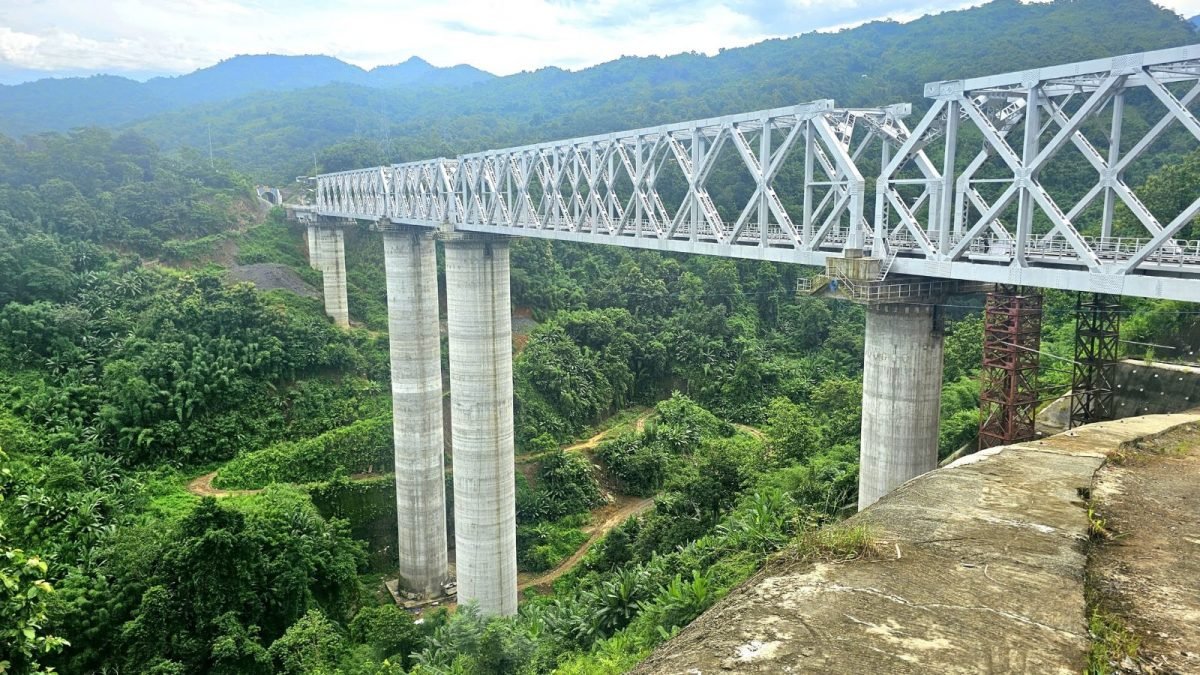
Last Updated:
Conceptualised 26 years ago, the 51.38 km railway line traverses one of India’s most difficult terrains and includes 48 tunnels stretching almost 13 kilometres in total
Aizawl will be the fourth north-eastern capital after Assam, Tripura, and Arunachal Pradesh to be linked to the national rail network. (All India Radio)
Prime Minister Narendra Modi on Saturday dedicated Mizoram’s first railway line, the Bairabi-Sairang line to the nation, highlighting how it will be a “lifeline of transformation” by helping people avail better services and local businesses will get access to the rest of the country.
“This is not just a railway connection, but it is a lifeline of transportation. It will revolutionise the lives and livelihoods of people of Mizoram. Farmers and businesses of Mizoram can reach more markets across the nation,” the prime minister said.
Calling the inauguration of the railway line a “historic day”, PM Modi said: “This is a historic day, particularly for the people of Mizoram. From today, Aizwal will be on India’s railway map. A few years ago, I had the opportunity to lay the foundation stone for the Aizwal railway line. Today we proudly dedicate it to the people of the nation.”
Architectural Marvel
Conceptualised 26 years ago, the 51.38 km railway line traverses one of India’s most difficult terrains.
The railway line includes 48 tunnels stretching almost 13 kilometres in total, along with more than 40 bridges. One of the most remarkable is Bridge No. 196, which towers 104 meters above the ground—42 meters higher than the Qutub Minar in Delhi. Carved through thick forests, rugged hills, and areas vulnerable to landslides, the line stands as a testament to determined engineering and careful planning.
Aizawl will be the fourth north-eastern capital after Assam, Tripura, and Arunachal Pradesh to be linked to the national rail network.
How does it help commuters?
Until now, the journey between Bairabi and Sairang meant long, difficult road travel through mountainous terrain. The new rail line cuts travel time between Aizawl and Silchar to just three hours, compared to seven by road.
In July, News18 had reported that the ministry is planning to introduce Vande Bharat and Rajdhani services from Aizawl based on feasibility and demands. These trains will allow the people of Aizawl to easily reach the country’s major cities, and it will be convenient for them to come and go during festivals.
“Mizoram had no train link till now. This project will transform connectivity in the Northeast,” said KK Sharma, CPRO, Northeast Frontier Railway.
The state government also estimates that tourist arrivals will increase by 50 per cent within the next five years which will help push up sales in hotels, homestays, handicraft markets and transport services.
Apart from the tourism and trade perspectives, the new railway line strengthens India’s border infrastructure in a region close to the India-Myanmar border, critical from a national security perspective. It could potentially support military logistics and disaster response in this sensitive border region in case of an exigency.
The News Desk is a team of passionate editors and writers who break and analyse the most important events unfolding in India and abroad. From live updates to exclusive reports to in-depth explainers, the Desk d…Read More
The News Desk is a team of passionate editors and writers who break and analyse the most important events unfolding in India and abroad. From live updates to exclusive reports to in-depth explainers, the Desk d… Read More
Mizoram, India, India
September 13, 2025, 12:18 IST
Read More
Travel Guides & Articles
Indian travel blogger shares budget hacks, exact cost of 2-week Italy trip: ₹46K flights, ₹38K stay and total expense…
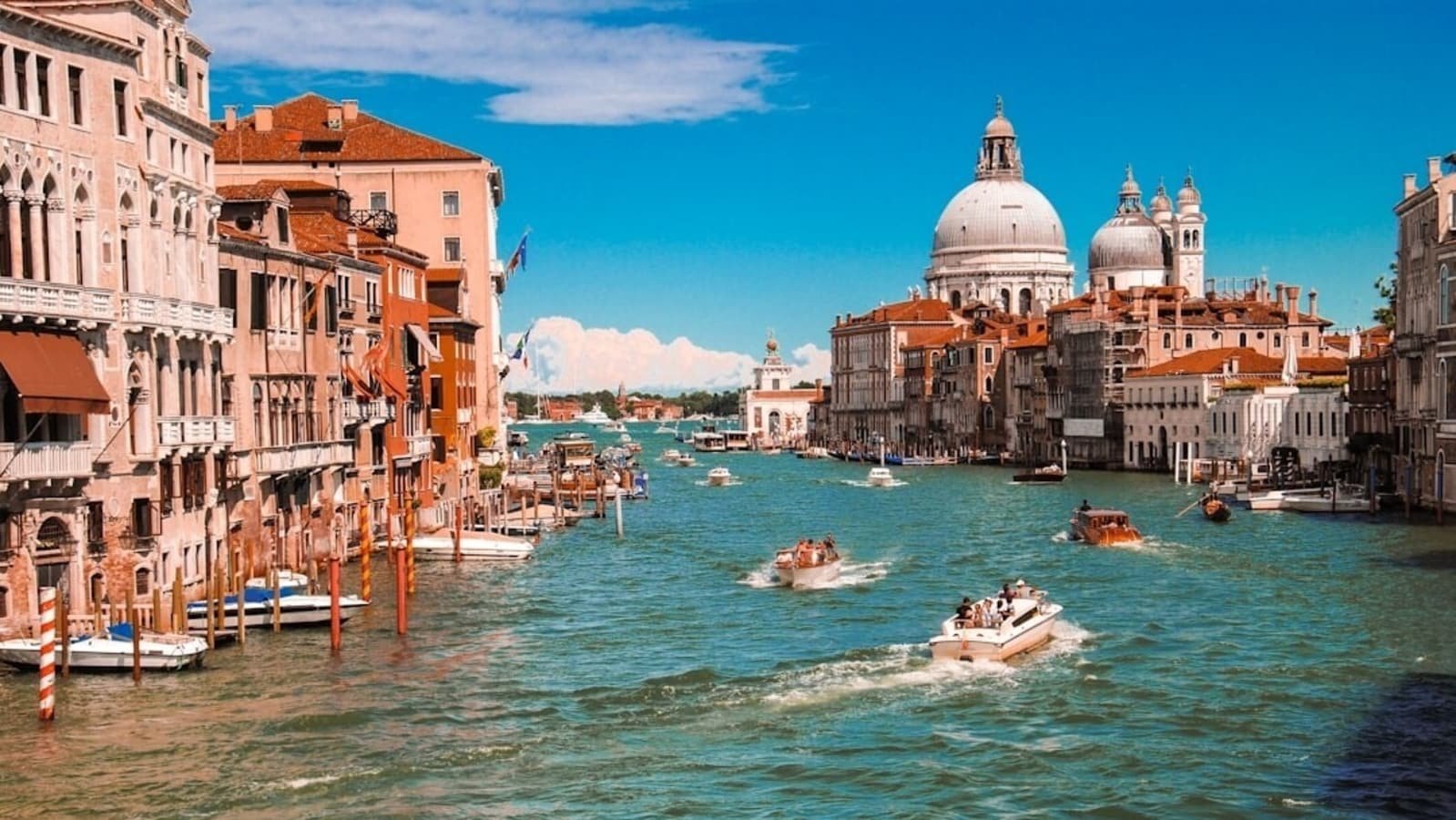
Dreaming of a vacation in Italy but not sure where to begin – or how much you need to save? From flights and accommodation to food, sightseeing, and hidden expenses, planning a trip to Europe’s most sought-after destination can feel overwhelming.
Also Read | Packing 101: Everything you need to download before a vacay
{{^usCountry}}
{{/usCountry}}
To make things easier, a travel creator, who goes by the Instagram handle Taking Window Seat (hereby referred to as TWS), has shared his experience of traveling through Italy, complete with a detailed breakdown of expenses. In an Instagram video posted on August 12, he explained accommodation and travel charges, including how much money he spent on food, paid attractions, inter-city travel and much more. He also provided affordable, money-saving tips for those on a budget.
Total expenses
{{^usCountry}}
The travel blogger spent two weeks in Italy and according to his estimates, it is an expensive travel destination. He provided a complete cost breakdown of his trip, starting with round trip flights from India to Milan and back from Rome to India, which amounted to a total of ₹46,000. In addition to flight expenses, he also paid ₹13,500 for travel insurance and Schengen visa.
{{/usCountry}}
{{#usCountry}}
The travel blogger spent two weeks in Italy and according to his estimates, it is an expensive travel destination. He provided a complete cost breakdown of his trip, starting with round trip flights from India to Milan and back from Rome to India, which amounted to a total of ₹46,000. In addition to flight expenses, he also paid ₹13,500 for travel insurance and Schengen visa.
{{/usCountry}}
“We explored three cities in Italy: Milan, Florence, and Rome. And while staying in these cities, we also took some day trips, such as to Lake Como, Cinque Terre, and the entire Tuscan region,” said TWS, and added, “For inter-city travel, we paid a total of ₹2,000, and we booked all tickets 2 months in advance from the official websites because train prices here increase with time.”
Based on his experience, accommodation turned out to be the biggest expense. The blogger continued, “We stayed in Airbnbs in every city, with an average price of ₹6,500 per day, except Milan, which was for ₹8,000.” He also pointed out affordable alternatives for those on a tighter budget, recommending hostels that cost around ₹4,000 on average.
The travellers visited some paid attractions in the cities which amounted to a total of ₹15,000, as well as the Champions League semi-finals in San Siro for ₹15,000. Other miscellaneous expenses included, “ ₹3,000 for daily food and drinks, ₹1,000 for an e-SIM, and ₹800 for a travel pass in every city except Florence.”
The overall expenditure for the trip amounted to ₹1,68,100 per person.
Also Read | 30 kg luggage trolleys: Large capacity suitcase to accommodate heavy packing
Budget saving hacks
TWS didn’t just break down expenses – he also shared a few smart money-saving hacks for exploring Italy on a tighter budget.
- Staying in a hostel is not only affordable but also provides a chance to socialise with fellow travelers or locals. Some hostels recommended by the travel blogger are:
Milan: Ostello Bello Grande, YellowSquare Milan
Florence: Plus Florence, Ostello Bello Firenze
Rome: The RomeHello, YellowSquare Rome
- Cooking at your Airbnb saves quite a bit of money, and it is quite accessible because supermarkets are everywhere.
- TWS recommends booking trains directly from Trenitalia or Italo in order to skip extra fees, and avoiding Omio or Trainline.
- Buying wines from supermarkets is much cheaper than ordering at bars.
- Florence is a walkable city, so spending money on local transport is not required.
- In the cities that have metro or trams, using a travel pass is cost-effective.
- Avoid taxis since they are very expensive in Italy.
- Watch out for Service Charges at dine-in restaurants; takeaway for budget meals is preferable.
- Milan and Amalfi are expensive, so TWS recommends planning your days ahead.
- He suggests using Zero Markup Cards like Scapia to avoid TCS and conversion charges.
- Avoid buying airport SIM cards, instead carry an eSIM like Matrix Cellular.
- Visa should be applied six months in advance.
- The best months for budget travel are March, April, and October.
Note to readers: This report is based on user-generated content from social media. HT.com has not independently verified the claims and does not endorse them.
This article is for informational purposes only and not a substitute for professional advice.
{{^usCountry}}
{{/usCountry}}
{{^usCountry}}
{{/usCountry}}
Catch your daily dose of Fashion, Taylor Swift, Health, Festivals, Travel, Relationship, Recipe and all the other Latest Lifestyle News on Hindustan Times Website and APPs.
Catch your daily dose of Fashion, Taylor Swift, Health, Festivals, Travel, Relationship, Recipe and all the other Latest Lifestyle News on Hindustan Times Website and APPs.
-

 Business2 weeks ago
Business2 weeks agoThe Guardian view on Trump and the Fed: independence is no substitute for accountability | Editorial
-
Tools & Platforms1 month ago
Building Trust in Military AI Starts with Opening the Black Box – War on the Rocks
-

 Ethics & Policy2 months ago
Ethics & Policy2 months agoSDAIA Supports Saudi Arabia’s Leadership in Shaping Global AI Ethics, Policy, and Research – وكالة الأنباء السعودية
-

 Events & Conferences4 months ago
Events & Conferences4 months agoJourney to 1000 models: Scaling Instagram’s recommendation system
-

 Jobs & Careers2 months ago
Jobs & Careers2 months agoMumbai-based Perplexity Alternative Has 60k+ Users Without Funding
-

 Podcasts & Talks2 months ago
Podcasts & Talks2 months agoHappy 4th of July! 🎆 Made with Veo 3 in Gemini
-

 Education2 months ago
Education2 months agoVEX Robotics launches AI-powered classroom robotics system
-

 Education2 months ago
Education2 months agoMacron says UK and France have duty to tackle illegal migration ‘with humanity, solidarity and firmness’ – UK politics live | Politics
-

 Podcasts & Talks2 months ago
Podcasts & Talks2 months agoOpenAI 🤝 @teamganassi
-

 Funding & Business2 months ago
Funding & Business2 months agoKayak and Expedia race to build AI travel agents that turn social posts into itineraries


